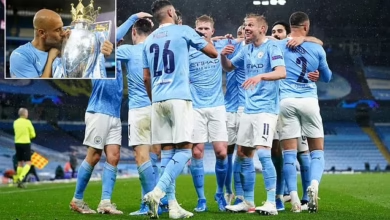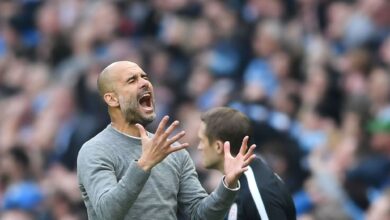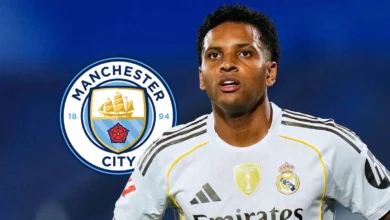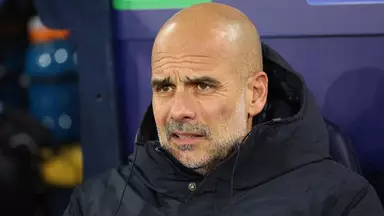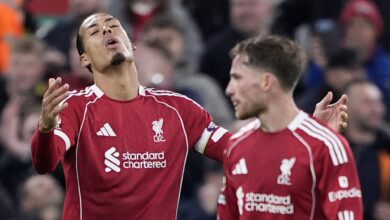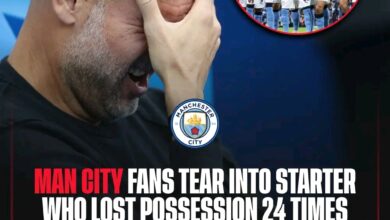Arsenal’s Summer Transfer Strategy: Analyzing the Pursuit of Elite Attacking Talent
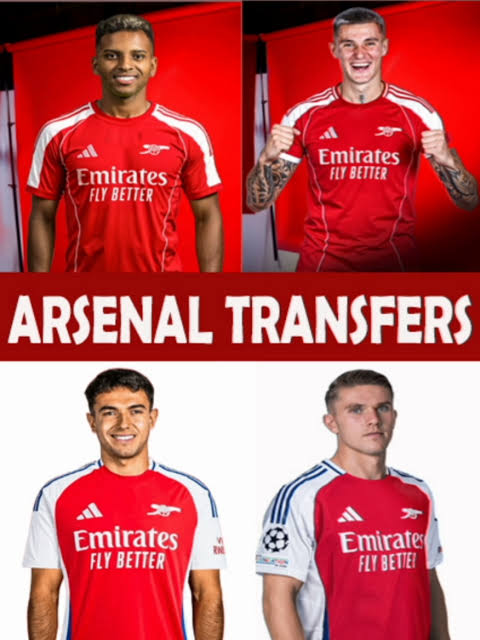
Arsenal’s approach to the current transfer window represents a significant evolution in their recruitment strategy under Mikel Arteta and sporting director Andrea Berta. The north London club has demonstrated an unprecedented willingness to invest heavily in world-class talent, signaling their serious intent to challenge for the Premier League title and compete at the highest level of European football. This summer’s transfer activities reveal a club that has learned from past campaigns and is now prepared to make the bold moves necessary to bridge the gap to their rivals.
The Gunners’ transfer philosophy has undergone a dramatic transformation since Arteta’s appointment. Gone are the days of seeking bargain purchases and developing potential; instead, Arsenal are now operating in the market’s upper echelons, targeting established stars who can make immediate impacts. This shift reflects not only improved financial resources but also a clearer understanding of what it takes to compete with the Premier League’s elite clubs.
Arsenal’s reported interest in Real Madrid’s Brazilian winger Rodrygo represents perhaps the most ambitious transfer target the club has pursued in recent memory. The 24-year-old’s astronomical release clause of £861 million may seem prohibitive, but it’s the very fact that Arsenal are engaging with his representatives that demonstrates their elevated status in the transfer market. This pursuit signals that the Gunners are no longer content with being secondary players in the race for elite talent.
Rodrygo’s profile fits perfectly with Arsenal’s current tactical needs and long-term vision. The Brazilian international offers the kind of pace, technical ability, and goal threat that would transform Arsenal’s attacking options. His ability to operate across the front line provides the tactical flexibility that Arteta craves, allowing the Spanish manager to deploy various formations and approaches depending on the opposition.
The timing of Arsenal’s approach is particularly astute. Rodrygo’s reduced role at Real Madrid, partly due to the arrival of Kylian Mbappé and the tactical preferences of Carlo Ancelotti, creates a window of opportunity that may not exist for long. The Brazilian’s frustration with his current situation, combined with his desire for regular first-team football, makes him a realistic target despite the complexities involved in negotiating with Real Madrid.
From a tactical perspective, Rodrygo would address several key areas where Arsenal have occasionally struggled. His pace and direct running would provide an additional dimension to their attacking play, particularly in transition moments and counter-attacking situations. The Brazilian’s ability to stretch defenses and create space for teammates would be invaluable in breaking down stubborn defensive blocks, a challenge that has periodically frustrated Arsenal throughout recent seasons.
While the Rodrygo pursuit captures headlines, Arsenal’s simultaneous interest in Crystal Palace’s Eberechi Eze represents a more pragmatic approach to squad building. The England international’s £68 million release clause, while substantial, is significantly more manageable than the complex negotiations required for a Real Madrid player. Eze’s proven Premier League experience and understanding of English football make him an attractive proposition for immediate impact.
Eze’s creative abilities and flair would bring a different dimension to Arsenal’s attacking play. His skill in tight spaces, combined with his ability to create chances from seemingly impossible positions, would provide the kind of unpredictability that can unlock games against well-organized defenses. The Palace star’s versatility in being able to play as a winger, attacking midfielder, or even as a false nine gives Arteta multiple tactical options.
The strategic wisdom in pursuing both players simultaneously reflects modern transfer market realities. By maintaining multiple targets, Arsenal can apply pressure in different negotiations while protecting themselves against the possibility of missing out on their primary target. This approach also allows them to compare the relative merits of each player and make a decision based on the best available opportunity rather than being forced into a corner with limited options.
Arsenal’s £60 million acquisition of Martin Zubimendi from Real Sociedad represents a significant statement in the transfer market. The Spanish midfielder’s technical ability, tactical intelligence, and leadership qualities make him an ideal fit for Arteta’s system. His ability to dictate tempo, break up play, and initiate attacks from deep positions addresses a crucial need in Arsenal’s midfield structure.
Zubimendi’s arrival signals a shift in Arsenal’s approach to midfield construction. Rather than relying solely on the energy and work rate of players like Declan Rice, the club is now investing in players who can control games through superior technical ability. This evolution reflects Arteta’s desire to create a more sophisticated and possession-based approach to their play.
The Spanish international’s experience in La Liga and with the national team brings an additional level of maturity and understanding of high-pressure situations. His ability to perform in crucial moments, combined with his tactical awareness, makes him an ideal candidate to thrive in the intense environment of Premier League football. His presence in the squad also provides depth and competition in midfield, essential for a club competing across multiple competitions.
The reported £52 million agreement for Chelsea’s Noni Madueke represents another significant addition to Arsenal’s attacking arsenal. The England international’s pace and directness would provide a different profile of winger to complement the existing options in Arteta’s squad. His ability to take on defenders in one-on-one situations and create opportunities through individual brilliance adds an element of unpredictability to Arsenal’s attacking play.
Madueke’s Premier League experience, despite his relatively young age, makes him a valuable addition who can adapt quickly to Arsenal’s tactical requirements. His understanding of the league’s physical demands and tactical nuances eliminates the adaptation period that sometimes affects players arriving from foreign leagues. This immediate availability could prove crucial in a season where Arsenal cannot afford a slow start in their title pursuit.
The winger’s versatility in being able to play on either flank provides tactical flexibility that Arteta values highly. His ability to cut inside onto his stronger foot creates goal-scoring opportunities, while his pace allows him to stretch defenses and create space for teammates. This dual threat makes him a valuable asset in various tactical setups and game situations.
The profile of players Arsenal are targeting reveals significant insights into how Arteta envisions the team’s tactical evolution. The emphasis on pace, technical ability, and versatility suggests a move toward a more dynamic and flexible approach to attacking play. Rather than relying on predictable patterns, these additions would allow Arsenal to vary their approach based on opposition weaknesses and game situations.
The combination of Rodrygo or Eze with Madueke would create a formidable attacking unit capable of threatening defenses in multiple ways. The tactical flexibility this provides would be invaluable in both domestic and European competitions, where the ability to adapt to different opposition styles is crucial for success.
Arteta’s preference for players who can operate in multiple positions reflects modern football’s tactical demands. The ability to change formations and approaches during games, without necessarily making substitutions, provides a significant advantage in the chess match between opposing coaches. This flexibility would be particularly valuable in crucial matches where tactical adjustments can determine the outcome.
Arsenal’s willingness to invest heavily in the transfer market represents a calculated risk based on the potential returns from success. The club’s improved financial position, combined with the revenue potential from Champions League qualification and title challenges, justifies the substantial outlay on player acquisitions. This investment strategy reflects a understanding that success in modern football requires continuous investment in elite talent.
The timing of these moves also reflects smart market strategy. By acting early in the transfer window, Arsenal can secure their targets before competition intensifies and prices potentially increase. This proactive approach also allows new signings more time to integrate into the squad and adapt to Arteta’s tactical requirements before the season begins
The club’s ability to compete financially with other top clubs represents a significant shift from previous transfer windows. This enhanced spending power, combined with the appeal of playing under Arteta and in Arsenal’s attacking style, makes the club an attractive destination for elite players seeking new challenges
Arsenal’s transfer activities must be viewed within the context of their competitors’ moves in the same window. The club’s willingness to invest heavily demonstrates their commitment to closing the gap on Manchester City and other title rivals. This strategic positioning is crucial for maintaining relevance in the race for major honors.
The players being targeted would address specific areas where Arsenal have previously fallen short against top opposition. The addition of pace and directness in attacking areas would provide solutions to the tactical challenges posed by deep-lying defenses and counter-attacking opponents. This tactical evolution is essential for sustaining title challenges over the course of a long season.
The strategic timing of these moves also sends a message to current squad members about the club’s ambitions. The arrival of high-quality players raises standards in training and competition for places, ultimately benefiting the entire squad’s performance level. This competitive environment is essential for maintaining the intensity required for success at the highest level.
Arsenal’s current transfer strategy reflects a long-term vision that extends beyond immediate tactical needs. The ages of the targeted players suggest a balance between immediate impact and future potential, ensuring that investments provide value over multiple seasons. This approach demonstrates sophisticated planning that considers both short-term objectives and long-term sustainability.
The emphasis on versatile players who can adapt to different tactical systems also reflects planning for potential changes in playing style or formation. This flexibility ensures that player investments remain valuable regardless of tactical evolution, protecting the club’s financial interests while maintaining competitive advantages.
The integration of these new signings with existing squad members will be crucial for realizing the full potential of these investments. Arteta’s track record in developing players and creating cohesive tactical units suggests that these additions will be successfully integrated into the team’s existing framework.
Arsenal’s approach to the current transfer window represents a watershed moment in the club’s recent history. The willingness to compete for elite talent, combined with the strategic vision evident in their target selection, demonstrates a club that has learned from past experiences and is now prepared to make the moves necessary for sustained success.
The potential additions of players like Rodrygo, Eze, Zubimendi, and Madueke would transform Arsenal’s tactical capabilities and competitive position. These moves signal not just ambition but also the financial and sporting infrastructure necessary to compete at the highest level of modern football.
The success of this transfer strategy will ultimately be measured by on-field performance, but the ambition and planning evident in these moves suggest that Arsenal are positioning themselves for a sustained period of competitiveness. The combination of proven talent, tactical fit, and strategic vision creates optimism for the future direction of thambitious
As the transfer window progresses, Arsenal’s ability to complete these ambitious deals will test their new status as a major player in the global transfer market. The outcome of these pursuits will significantly influence not only the upcoming season but also the club’s trajectory for years to come. The Gunners appear ready to embrace the challenges and opportunities that come with competing at the highest level of world football.







